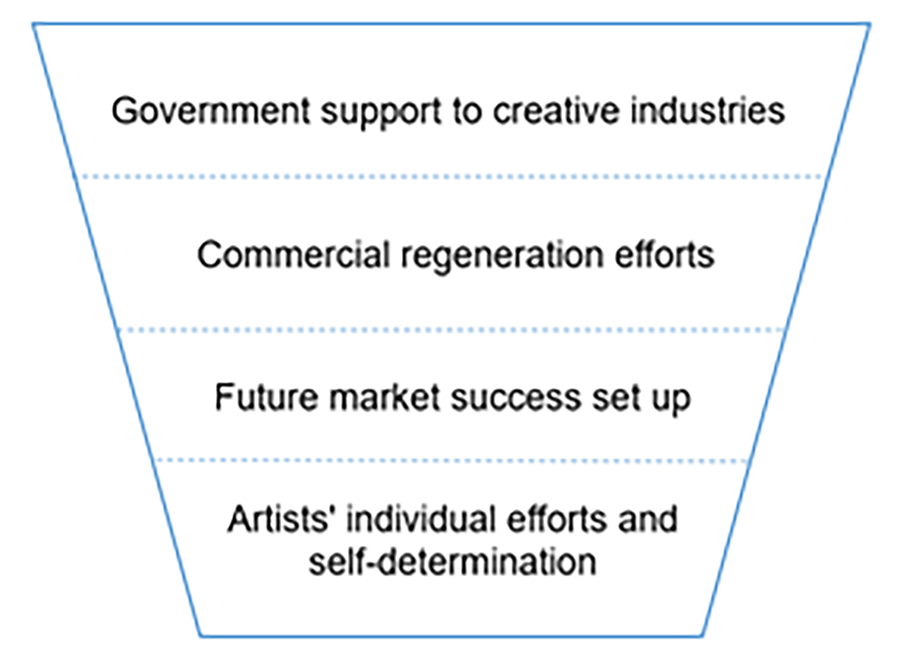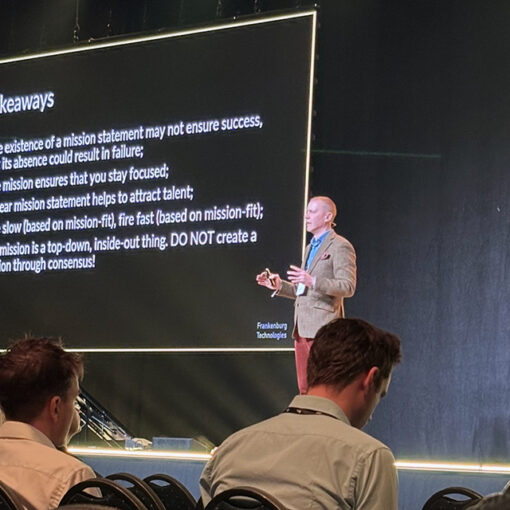The creative industries play an important role in the British economy and bring an upwards of 92 billion pounds of gross value add (GVA) and 3 million jobs in the UK and are growing much faster than many other industries thus providing a competitive advantage to the nation. (HM Government 2018)
Artist-run galleries provide alternative exhibition space to commercial galleries and are often the entry point for young and emerging artists before they find gallery representation. These are good places for the artists to experiment and network with fellow artists. For synergies and cost saving, many artists form arts collectives. (Sutton 2018.)

In town’s regeneration efforts, artists can have an important role in placemaking in the form of shaping the physical and social characteristics of a neighbourhood by spreading their colours and attitude through the cultural scene.
However, setting the scene might not come easily and questions around who can do it and how to do it are important to take into consideration.
The stakeholders
Supporting creative businesses collectively, to increase their visibility and to add cultural opportunities in a town centre during a regeneration programme, is not as straight forward as it would appear. The lessons here were learnt when setting up an art pop up in a suburban town of Orpington, England (Thomas 2022).
What we learnt was that the government lays the foundation where creative businesses can thrive and their level of support matters.
The local authorities are encouraged to support their communities creating their own cultural offerings, which ensures that a wider socio-economic classis will be represented, and the content will be more relevant and beneficial to the local people. (Arts Council England 2021.) Also, the commercial regeneration efforts matter too. Who sees the potential in a town and how they invest in it dictates the available space for opportunities. Here comes also the more disturbing element of gentrification but also how creatives can influence in placemaking.

The market set up and maturity forms the next gate keeper to success but ultimately it comes down to the individual elements, relationships within a group and the principles of co-operation and ethics and the self-determination about how basic psychological needs dictate the levels of motivation one has and the outcome and speed of reaction to any initiative.
The findings
For a collective art space to succeed it will require strong leadership, intrinsic motivation, entrepreneurship and open mind.
- Grasp an opportunity, this can be found anywhere but it needs to be understood by everyone taking part.
- Motivation comes from Inside, it can’t be projected onto anyone.
- Good ground work, the founder or someone else, must do the leg work and sort out the facts and figures as detailed as possible.
- Engage, inspire and sell the idea to everyone you meet and especially to your key stakeholders.
- Use diplomacy and resilience to get what you need but stay open for change.
- Be realistic and don’t waste energy on those who are not interested.
- It’s not all about sales, the connections and visibility are important too.
- And appearances matter too. Choose your partners wisely.
Authors
Saara Thomas is a student at LAB University of Applied Science’s Master’s programme.
Brett Fifield is a Principal Lecturer for LAB University of Applied Sciences Business Faculty.
References
Arts Council England. 2021. Let’s Create, Strategy 2020‒2030. Cited 25 Apr 2022. Available at https://www.artscouncil.org.uk/sites/default/files/download-file/Strategy%202020_2030%20Arts%20Council%20England.pdf
HM Government. 2018. Industrial Strategy Creative Industries Sector Deal. Open Government Licence. Cited 25 Apr 2022. Available at https://www.gov.uk/government/publications/creative-industries-sector-deal
McCutcheon, S. 2020. Close up photo of rainbow colors. Pexels. Cited 25 Apr 2022. Available at https://www.pexels.com/photo/close-up-photo-of-rainbow-colors-4219312/
Sutton, B. 2018. The Pleasures and Pitfalls of Starting and Sustaining an Artist-Run Gallery. Cited 25 Apr 2022. Available at https://www.artsy.net/article/artsy-editorial-pleasures-pitfalls-starting-sustaining-artist-run-gallery
Thomas, S. 2022. Orpington Creative Businesses Identified to elevate. Master’s Thesis. LAB University of Applied Sciences. Cited 25 Apr 2022. Available at https://urn.fi/URN:NBN:fi:amk-202205179902




